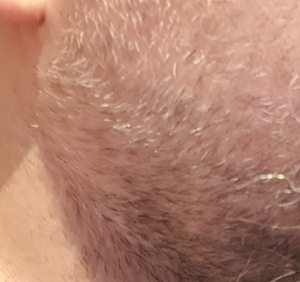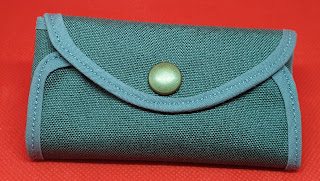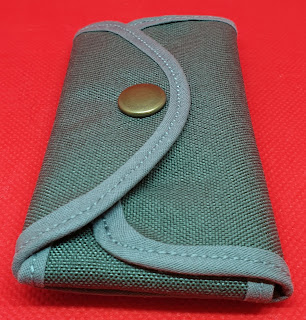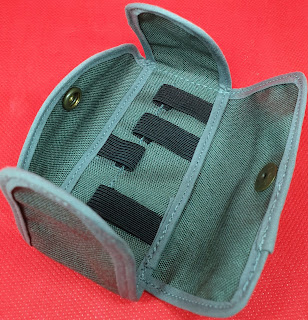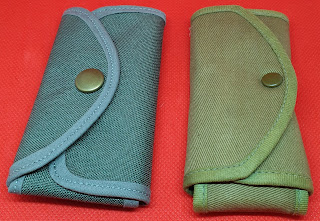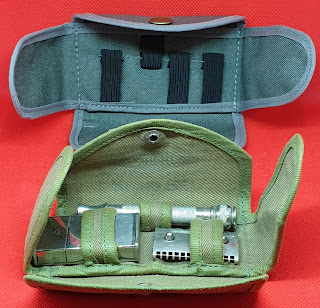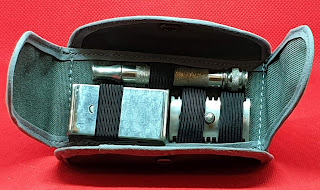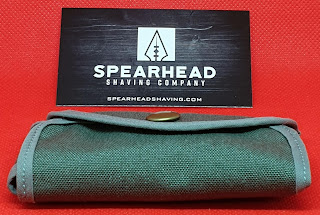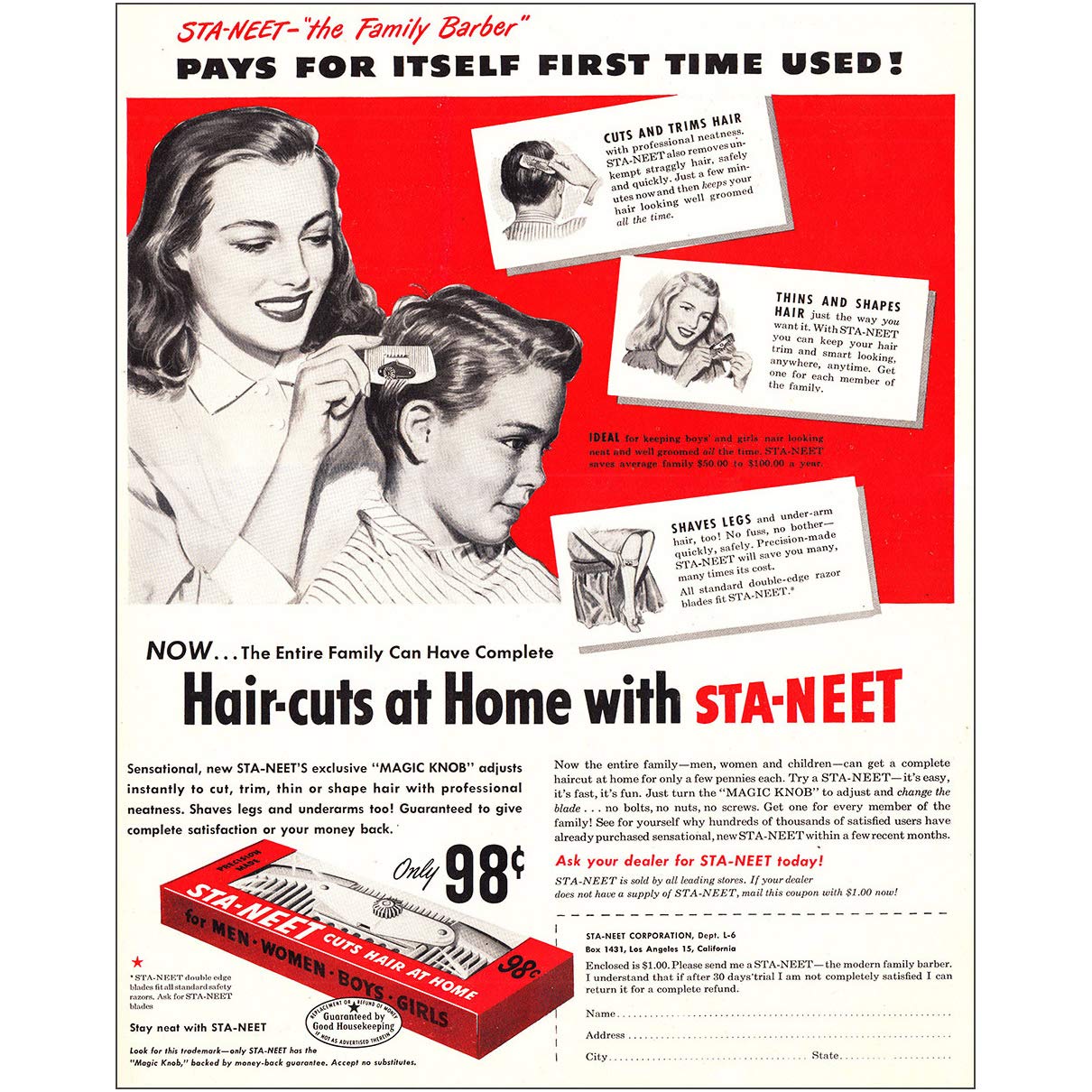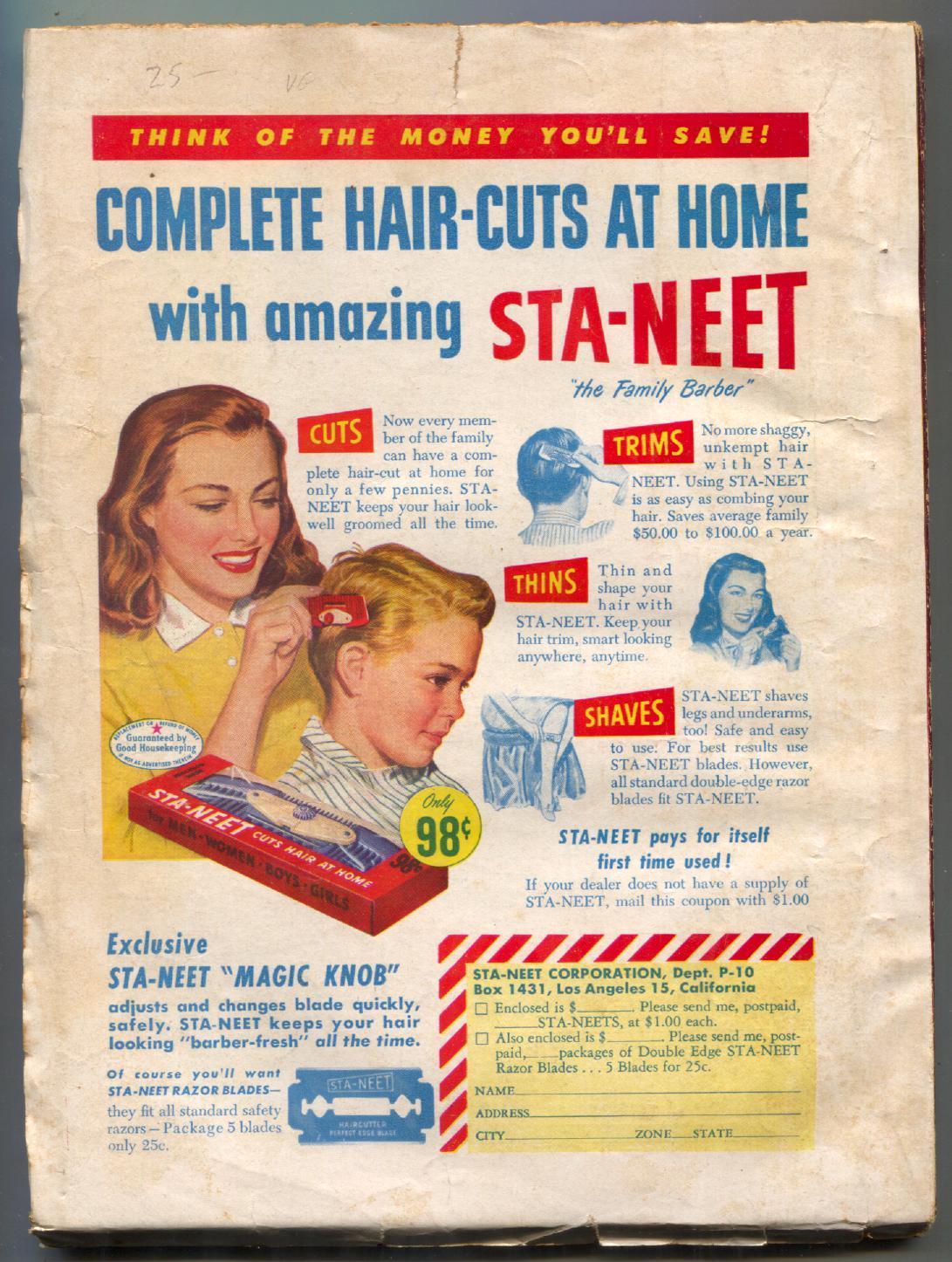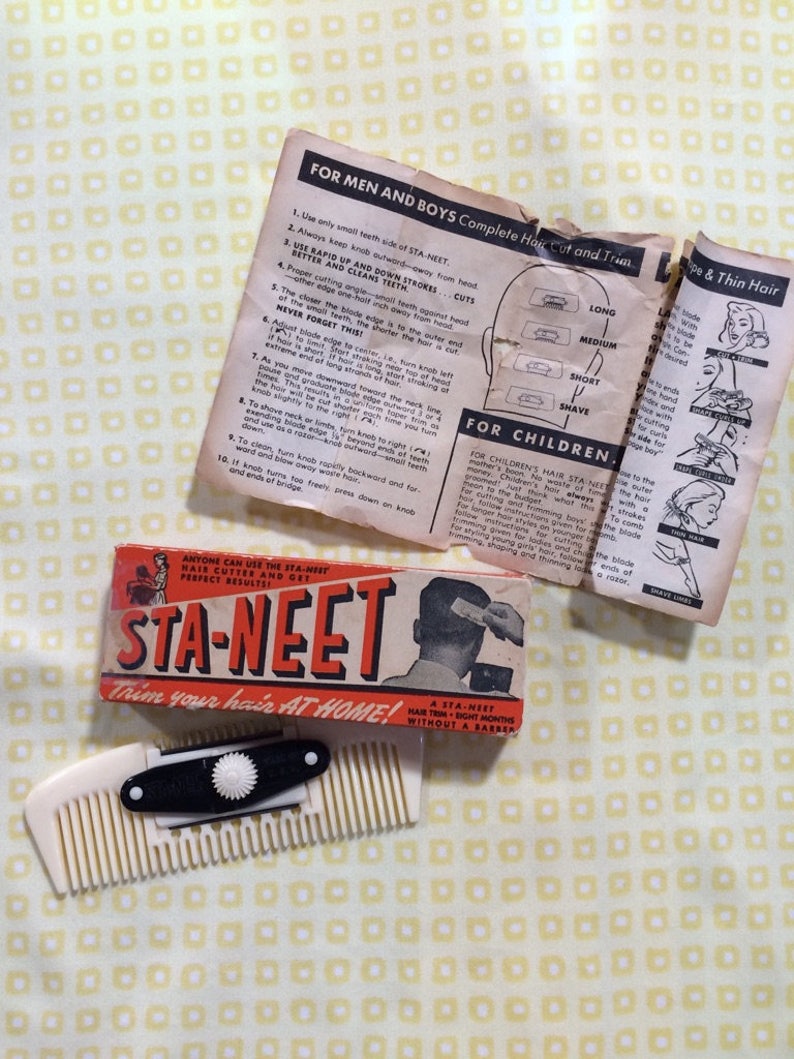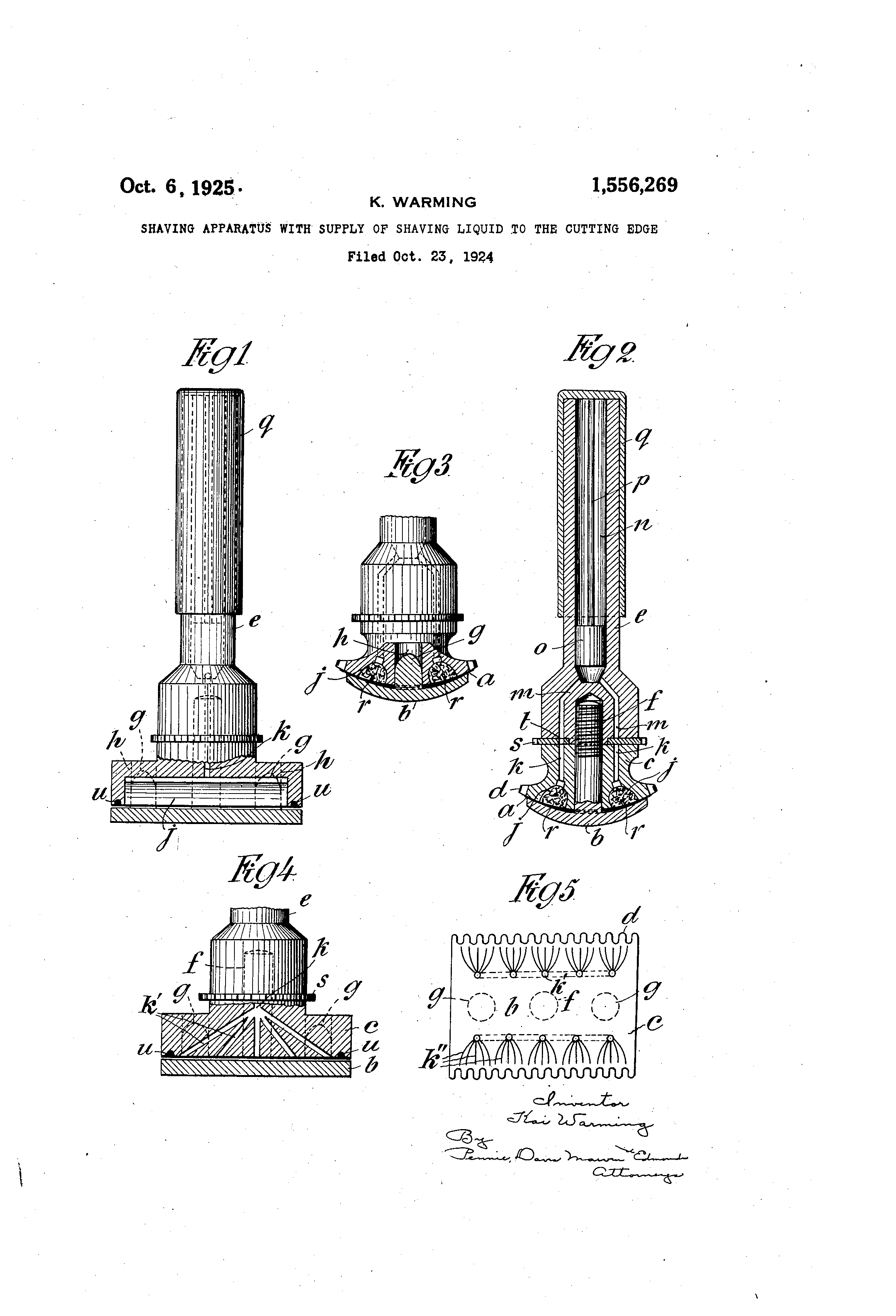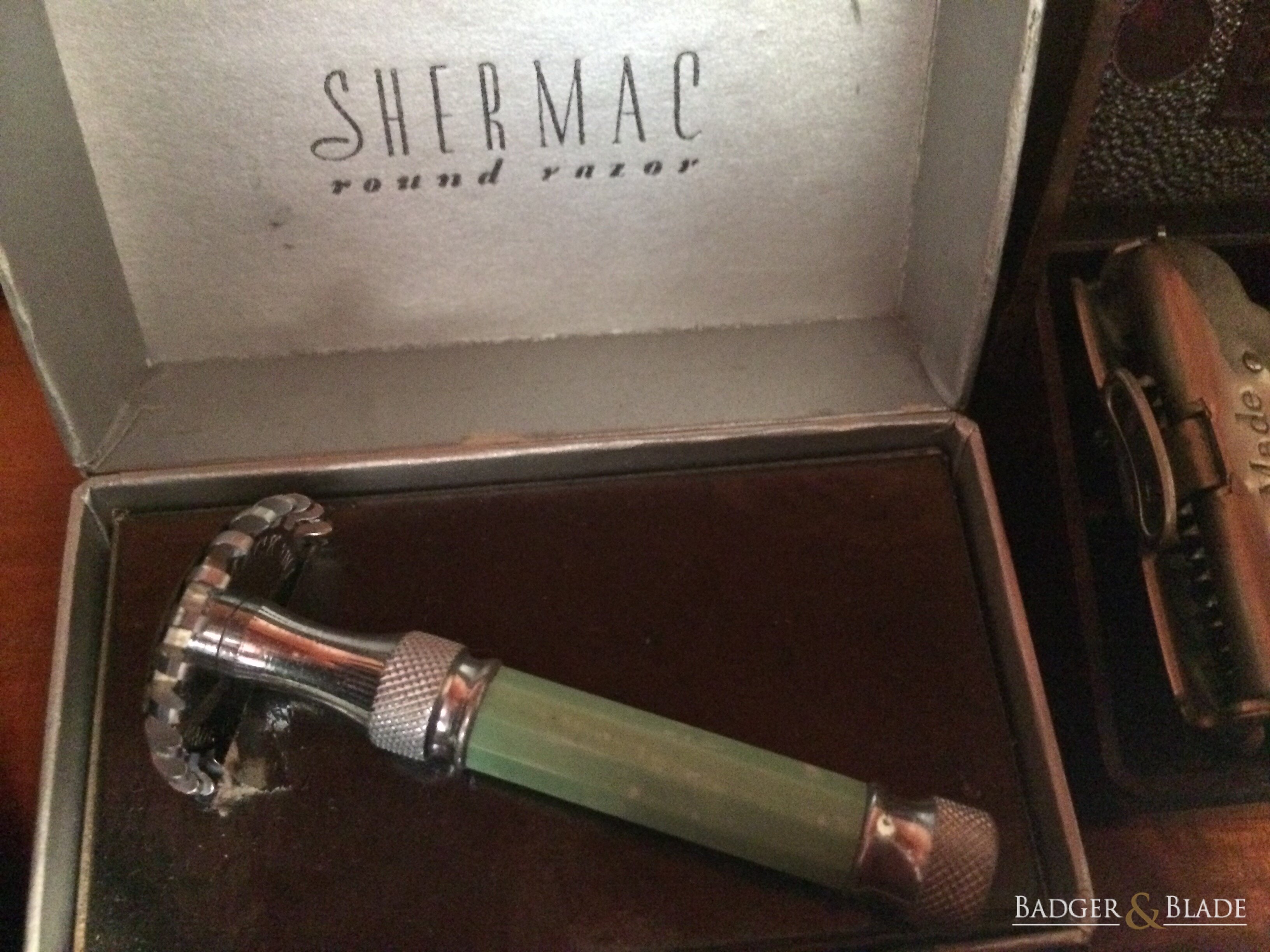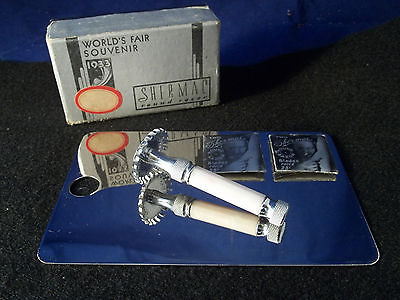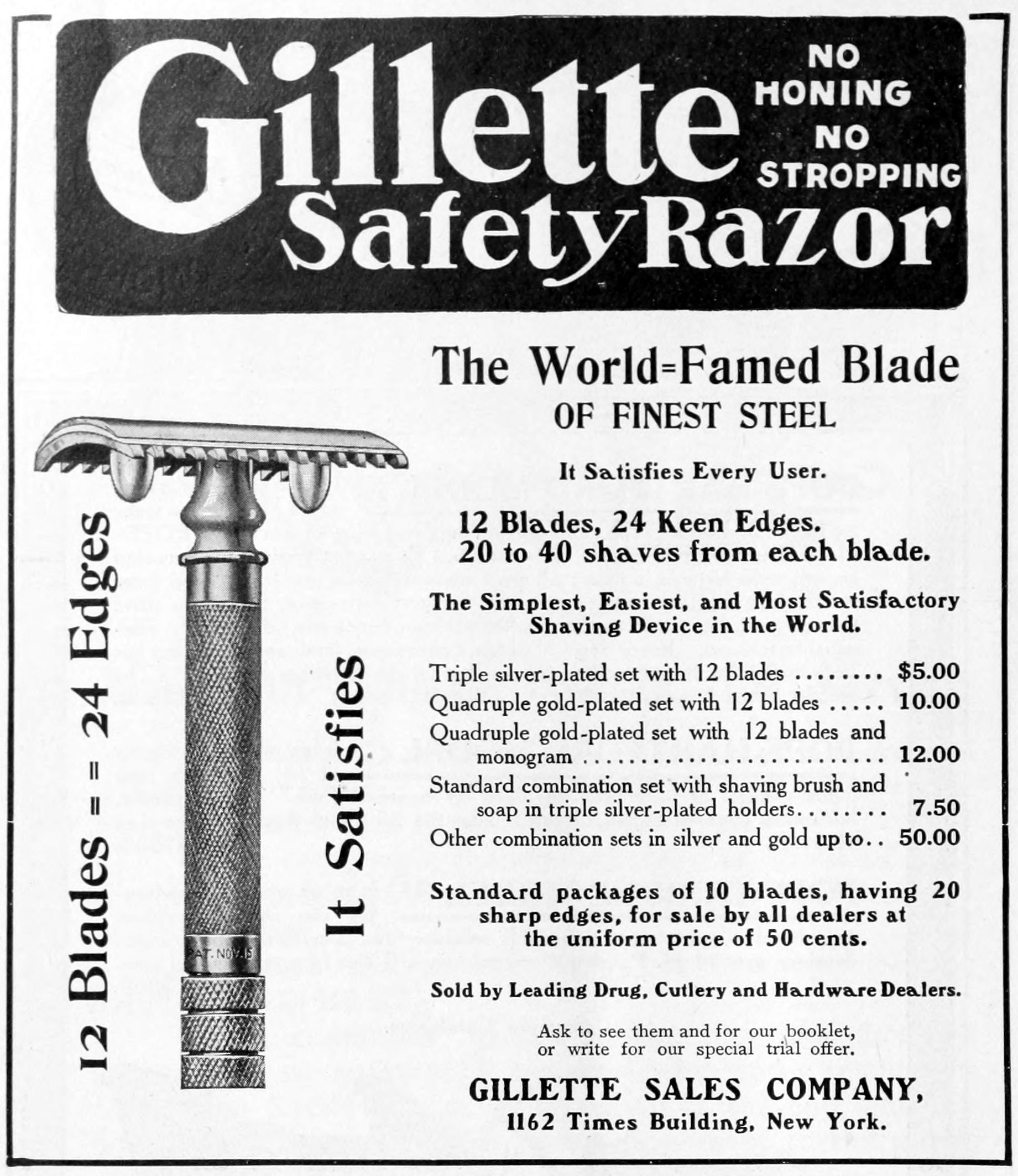Upside; I’m ordered to spend time with the family.
Downside: Normal routines shot to hell.
Result: Stubble!
Tag Archives: Grooming
New arrival – a khaki kit for the modern warfighter
As some of you might recall, I own a vintage khaki kit from the Great War – specifically from 1918 if the serial number on the razor is an indication.
I not just own it, but it is in active use. It lives in my GoBag, so whenever I am on the Go i shave with it… a hundred years and more is no age for a razor, and the single button webbing kit have held up remarkable well too.
Some time ago I was contacted by Ironbeard on twitter (@ SaveYourShave), and told that he was sending me a modern reproduction of the khaki set – he had seen my Shaves Of The Day with it and got interested enough to not only get his own but to make reproductions in modern materials as well. And yesterday there was a padded envelope in my mailbox…
So here it is, both by itself and next to it’s older brother:
I had to try it both with the Gillette Old Type from my original khaki set, and a modern three piece razor from Yaqi (I don’t own many modern three piece razors… so I had to pick the one short handled one I own). The workmanship looks at least as sturdy as the original, the choice of elastic loops instead of fabric means handles and heads of varying sizes can be accommodated with easy.
As luck will have it I’ll be travelling a fair bit the next couple of weeks, so I’ll be able to give it a good test. Expect a review in the near future.
Sta-Neet – the home barber?
As I was trawling the net, I stumbled over a device that should pay for itself after a single use.
It trims, it thins, it cuts, it shaves legs… probably chops onions too. A device that promises a lot usually delivers just a little, but the thing seems simple enough: a comb with a DE-blade attached.
I can see a device like this cutting and trimming hair – especially if your preferred hairstyle is short all over. I can see a device like this thinning and shaping hair, provided you got a steady hand. I cannot see a device like this giving your legs a very close shave though.
For a 98 US cents in the mid ’40s (about 14 US dollars today, give or take), I can see it as a useful tool to extend the time between going to the barber or hairdresser. I can’t see it being a complete replacement though… even less considering the fact that it seems to be made from plastic:
Too hot to shave…
As you probably are aware, there is a heatwave in Europe these days… so I find it’s simply too hot to shave. 28°C in the shave den this morning, which don’t make it too inviting to stay in there for any amount of time.
On the bright side, the forecast is stating that the temperature should go down next week.
Everything old is new again, again
…and again, and again.
Heated razors is an age old quest. Gillette just dropped one, which seems to have impressed Mark over on the Sharpologist, and in their typical over the top marketing Gillette seems to be pushing this since the best shave ever… A hint for P&G: if you need to advertise the fact that your razor is waterproof, you’ve likely made an overly complicated razor.
Electrically heated razors isn’t a new idea by far, even if the latest itteration seems both more complicated* and far safer to use than some of the older ideas**.
While I can’t be completly sure, I’m reasonable satisfied that the current offering is based on a patent I found that was filed in in 2008 and assigned to the Gillette company – the patents describe a great many of the same features as the ads do.
…safety razor comprises a handle 14, a cartridge 15 with a safety device 18, a plate 24 and blades 30 between them. Inside the cartridge there is a heat-dispersive strip 40 and a heating element 45 with a resistive element 46 and an insulating element 50. The safety device comprises an electrical circuit providing power supply to the resistive element that provides heat to the heat-dispersive strip so that it imposes warmth to skin of the user during shaving.
The patent also lists twenty seven (27!) citations that predates it… and I found quite a few patents for heated razors that isn’t listed in the application.
Barra Charles filed a version all the way back in 1923. If you think the plug looks kind of odd it’s because you’re meant to screw it into a light bulb socket… so no chance of grounding it.
…electrically heat safety razors in such a manner that they may be conveniently used while being heated and that the heat may be maintained during the shaving operation at any desired temperature, whereby I am enabled to obtain the advantageous results of smoothness and comfort during shaving and to avoid infections of the skin which frequently occur from the use of unsterilised razors.
Charles Barra also filed a heated straight razor in 1923, or rather an attachment that turned your straight into a heated razor:
A razor blade heated to such a temperature will make shaving of a persons face more comfortable and the resulting shave will be more satisfactory than where the face is shaved with a cold razor.
…using an electric heater disposed at a suitable distance from the cutting edge of the blade, and in thermal relation thereto, which heater may be supplied with current from an ordinary electric service outlet, whereby the blade may be heated to and maintained at a sterilisation temperature both while not in use and while in the act of shaving.
(As a side note, sterilisation temperature is about 80°C (175°F) for almost all bacteria, yeast, and fungi… 80°C is enough to cause second and third degree burns in less than one second.)
In 1933 Pirwitz Emil filed for a safer variation, which required plugging and unplugging the razor:
…the invention employs a heating bolt disposed in the handle of the razor and made of material that is a good heat conductor, such as metal, the bolt iilling the entire handle from one end to the other and being adapted after one heating to keep the razor heated during an entire shaving operation without a new supply of heat.
…a bolt of this type permits the use of the razor without the dangers resulting from keeping the razor under current during the shaving operation.
Mr Pirwitz also showed an interesting variation in the same patent:
Look at figures 3 and 4; it’s a regular safety razor inserted into the heating device… which I presume you could either use while inserted in the bulky heater or take out and burn your fingers badly while shaving.
Thomas J Henderson and Leon Henderson aimed for cool hands in their 1935 patent:
The primary object of our invention is to provide in a safety razor a handle thereof which in use will apply heat only to the desired portion of the razor, that is, the head and blade, but will maintain a cool handle or grip.
A further object of our invention is to provide an electrically heated safety razor handle which is readily adapted for use on any suitable razor head.
Or how about this one from 1942, patented by Moses M Gravin?
…a safety razor with an electrically heated heating element therein which transmits an even heat to the razor blade and keeps it warm or hot during the shaving operation.
One of the objects of my invention is to heat the razor blade by conduction through a metallic element. I Another object of my invention is to provide ventilation between the heating element and the handle so that the handle will be cooled by the circulation of air.
In 1948 James Russel Hunt filed for a heated razor that allowed the shaver to adjust the current going into the razor by means of a rheostat:
..an electro-thermic shaver of the safety razor type which is adapted to directly heat the razor blade by heat conduction through a metallic element having a high coefficient of thermal conductivity such as copper.
…a heat control unit to permit the heat to be regulated by the user to produce various heat temperatures.
So as can be seen, the desire to make a heated razor is almost as old as Gillettes original safety razor… there is nothing new under the sun, nor in the shave den – except this time the offering isn’t that much bulkier than a regular razor, nor does it offer the exciting chance of electrocuting yourself while shaving.
*) It has overheat protection, two levels of heating, onboard battery with wireless charging, microcontroller, wobbly blades… I suspect the lats bit is unintentional
**) Hook your ungrounded razor up to the light fixture in your bathroom.. what can go wrong?
Brushless razor?
Brushless creams saves time… or so I’m told. If you could do away with the whole ‘putting lather on before shaving’, it stands to reason that you should save even more time… or at least cut down on the clutter in the bathroom. So that might bave been on Kai Warming’s mind when he patented his “Shaving apparatus with supply of shaving liquid to the cutting edge” back in 1924.
Mr Warming – a Dane living in Copenhagen – stated in his patent that:
It is well known that shaving is rendered difficult if the lather or the shaving-liquid used is dried up or quite absorbed by the skin or the hair of the beard.
Hmm. Get a better shaving soap, or design an overly complex razor to supply the skin with a small quantity of suds or water? I think Kai had a little too much spare time…
So what he designed was a fairly normal DE, but with a hollow handle and small channels running from the hollow handle and into the base plate. As an added complexity – and possible to avoid spraying the bathroom with suds and water – he included a small rotating disk (S) in the channels, that let the shaver select which half of the razor water was spraying from as well as turning the spray on and off… at least until corrosion made the disk stick.
Just how the shaving liquid – be it “water, suds, glycerine, eau de cologne or olive oil” – was to be encouraged to move from the handle to the base plate is a little unclear to me; the patent mentions that the handle would be “displaceable as a unit by exertion of an axial pressure by hand, thereby supplying liquid from the said bore to the said cavity”… I can only read that as saying you would pump the handle to get liquid out.
The patent is long expired if a machinist out there feels adventurous… just don’t expect to sell much more than Kai did, even if you use olive oil as your shave liquid.
Shermac round razor for under-arm shaving
Remember Joseph J. Schermack, Jr. and the ladies underarm razor he filed a patent for in 1931? That razor might never have made it to production, but the Shermac did… basically the razor he patented but without the “upstanding diametrically opposed segmental portions overlapping the cutting edge of the blade” that turned the round razor into a double edged design. The Shermac was, in effect, a single edge razor… one where the edge wrapped all around the blade.
I can find no patent covering the Shermac; it could simply be that Joseph J didn’t consider it to be different enough from his patented razor to file a new one, or it could be that the US patent office didn’t consider it patentable. The Shermac certainly looks easier to both manufacture and use than the razor described in the patent.
Allegedly the Shermac is pretty heavy for the size; to me this implies a cast baseplate and cap, which would be both cheaper and easier than machining them.
Even with the improvements from the patent, the Shermac seems to have been little more than a passing novelty fad in the market – the kind of thing you would buy as a gift for someone you couldn’t think of a better present for… and making the blades would still be more difficult and expensive than a regular straight blade.
A couple of photos I found online:
Ladies’ underarm razor – a patent filed in ’31
Ever watched someone shave under their arms, or shaved your own armpits? Did it ever strike you that using a straight blade isn’t the best suited for shaving a concave surface? You’re not the first… back in 1931 Joseph J Schermack filed a patent where he pointed out that an
…ordinary safety razor has a straight cutting edge and therefore is not adapted for shaving a concave contour, as it would be apt to cut or scratch the flesh.
The guy had a point, even if his invention seems to have failed in the marketplace – although it failed, I believe, due to other reasons than being misconceived.
Judging by the drawing in the patent, the underarm razor is a fairly straightforward three piece razor but with a circular head. Mr Schermack seems to have been stuck to the idea of making his razor a double edged razor, despite suggesting a circular blade that was edged all around. Or in his own words:
Figure 2 is a plan view of the circular crenellated guard, with upstanding diametrically opposed segmental portions overlapping the cutting edge of the blade on opposite sides of the latter.
To me this would be wasting part of the cutting edge, as well as meaning the shaver would have to pay close attention to how the razor twisted while shaving. Compare Mr Schermack’s invention to the Curvefit or the Shermac razors( both of which was manufactured and sold), and you’ll see two ways to avoid that problem.
I suspect that the main reason Mr Schermack’s invention seems to have failed is the cost of manufacturing the blades (inherently more costly than straight edged blades).
A 1906 Gillette advertisement
While a 1906 advertisement for the Gillette razor and blades are interesting by itself, it’s interesting by itself (the Simplest, Easiest, and Most Satisfactory Shaving Device in the World? I’ll believe that at the time), it is also interesting to read the claims and prices… to compare and contrast.
The claim of 20 to 40 shaves per blade is in line with Gillette’s’ current claim of “up to a month” of shaves from their cartridges. The cost of 50 cents per pack isn’t too far of the price of carts either; taking inflation into account it cost the equivalent of about 14 USD.
A 1884 pamphlet: “The art of honing a razor. The art of shaving”
The Art of Honing a Razor
The first essential to painless and easy shaving is by use of a keen cutting razor, any of celebrated makes will do, but for ” self-shaving” none answers the purpose so well as the wedge-shaped blade, always avoiding the ” hollow-ground” or so-called ” rattlers” generally used by barbers, for the reason they arc so thin the edge will spring on a coarse beard, and will not cut so well as the thicker blades, which also hold a keen edge longer, and in all respects do better for private use. Next, after procuring a good water hone, with ” rubber,” a small slate stone always sold with the hone, and used to lubricate the hone with the aid of a sufficient amount of water, and rubbing this on the hone until a fine grit is evenly distributed over the surface. This done, and your hone placed in a firm position, you then proceed by stroking gently, the razor being placed on the side, bearing on it only sufficient to keep it firmly on the stone, drawing it from “heel to point” (the heel is the point nearest the handle, and the opposite the point), with the edge forward, and alternating the side after each stroke, and thus successively until a fine edge is obtained. If, during this process, the razor should click, jump, or give other evidence of some foreign substance between the razor and hone, it should be immediately removed by washing both hone and razor, rather than trouble looking for the mite or particle which caused it, as it will cause small “nicks” or breaks in the edge “of your razor, which you can determine by the use of a magnifying glass. Fig. I is the glass preferred by the writer for the purpose in question, and it would be always better before proceeding to use the hone, to examine the edge of the razor, as shown in Fig. V, in order to determine the amount of irregularities in the edge, then you know where to look for them, and when present, they will appear under the field of the glass as in Fig. 3.
Again, during the process of honing, from time to time pass the edge of your razor across your wet thumb or finger nail to clean it of what is called the ‘wire edge,’ after which again use the hone until you have a perfect, smooth edge, which, when obtained, will appear as shown in Fig. 2. Always make your examination in a good light, holding the glass, by means of the fenestration on the side, close to the eye and the razor close to the glass, and then focusing to your sight. After doing this a few times, you will soon become an adept in the use of it. When the edge is perfect, it will look uniformly smooth under the field of the glass, Fig. 2.
By closely studying the foregoing instructions, any person may in a short time become an adept at putting a razor in perfect order.
The Art of Shaving.
Many persons declare they cannot shave themselves, but after learning the first principles they find it “easy shaving” — the primary being a good sharp razor, and secondly how to use it.
After the face is well lathered and commencing to shave where the beard begins to grow at a point in front of the ear. with the razor in either hand holding the edge against the beard, and keeping the back of the razor close enough to the skin and without touching it, at the same time drawing the muscles’ of the opposite side of the face in order to tighten the skin of die part you are about to shave (as, by so doing, you will find it impossible to cut your face while shaving, as cutting is always by lack of observance of this rule), and at the same time giving a scythe-like or cutting motion, carefully avoiding the scraping or pulling down motion, and shaving with the growth of the beard, not against the “grain,” keeping in mind one grand principle in shaving, never turn the edge of the razor against the skin.
With the foregoing rules well in mind, you will have no trouble in -having, and overcome the dread of cutting yourself, and above all, the diseases likely to be contracted in barber shops from the use of unclean cups and razors, or shaving after some one with a loathsome skin disease.
After using a razor, always wipe it dry and clean, for by so doing moisture will not rust the fine edge; and to better insure against rust, carefully strap on a good leather strap kept especially for that purpose.
The following hints may prove valuable in determining the qualities of a razor: If after shaving carefully, you again examine the edge by the aid of the glass as in Fig. 2, and you find the edge turned, or in any way imperfect, it is safe to conclude that the razor is too soft or too hard. If the former, the edge will be turned or worn off; if the latter, it will be serrated and appear “broken out 1 ‘ along the edge, and therefore in purchasing a razor it is always better to adopt the plan generally adopted by barbers, i. e., to obtain the cutler’s sanction to allow you, by paying a trifle more, a reasonable length of time to try one after another until you get one to suit you. By this means you obtain all you wish in a razor.

